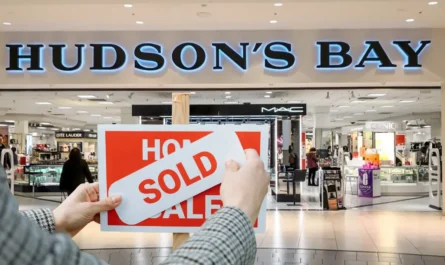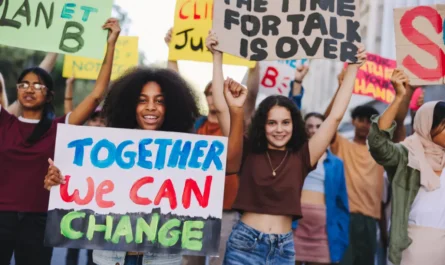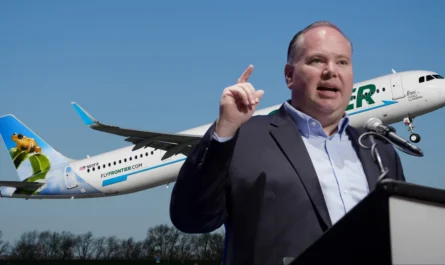Every September, I pause to think about the roots of one of America’s most enduring holidays: Labor Day. For many people, it’s the bookend to summer, a last chance to fire up the grill, take a quick trip, or relax before the pace of autumn kicks in.
But for me, Labor Day is more than a calendar event. It’s a moment to step back and appreciate the battles fought, the progress made, and the challenges that remain for working people in this country.
Labor Day 2025 will be observed on Monday, September 1, and like every year, it will carry both a celebratory and reflective meaning.
The timing is no accident; the holiday was intentionally placed at a point in the year when workers could use a break, and its date is fixed by law to always fall on the first Monday in September. Knowing when it happens is one thing. Understanding why it matters, in both historical and present-day terms, is where the real significance lies.
The Date of Labor Day 2025
Labor Day always lands on the first Monday in September. That’s been the case since the Uniform Monday Holiday Act standardized it, giving most workers a guaranteed long weekend. In 2025, that Monday falls on September 1, making it one of the earliest possible dates for the holiday. Some years it falls as late as the 7th, but this year’s timing will feel like summer ends just as August slips away.
That “floating date” setup has ripple effects for everything from school calendars to travel industries. Some schools start before Labor Day, while others deliberately wait until after it, giving families one last chance for summer trips. The retail sector also circles the date, not just for sales events, but because it signals the beginning of the fall shopping season.
But there’s a deeper reason the date format matters: it preserves the holiday’s original intent as a reward for labor. The day’s position in the year means it’s not tied to a single event or historical anniversary, allowing it to remain a flexible, forward-looking recognition of the workforce rather than a fixed memorial.
The Origins of Labor Day
The story of Labor Day begins in the late 19th century, at a time when the American workforce was pushing against the limits of industrial exploitation.
Factories ran on grueling schedules, twelve-hour days, six or seven days a week, and safety regulations were minimal. Workers were organizing, striking, and in some cases clashing violently with employers and law enforcement to demand better conditions.
The idea of setting aside a day to honor labor emerged from union leaders and civic groups who recognized that workers needed not only fair wages and safer workplaces but also public acknowledgment of their role in building the country.
The earliest Labor Day celebrations were grassroots affairs, featuring parades, speeches, and family picnics, often organized by unions in major cities.
By the early 1880s, a growing number of states were adopting their own versions of the holiday. It wasn’t a gift from employers or politicians, it was a direct result of sustained advocacy by workers themselves. This bottom-up origin is crucial to understanding why the day still resonates.
How Labor Day Became a Federal Holiday
While several states recognized Labor Day by the late 1800s, the push for national recognition intensified after the Pullman Strike of 1894.
That strike, sparked by wage cuts and poor working conditions, led to widespread railroad disruptions and violent clashes. Federal troops were sent in, resulting in deaths and deep public outrage.
In an effort to ease tensions and restore goodwill with the labor movement, President Grover Cleveland signed legislation making Labor Day a federal holiday in September of 1894, just days after the strike ended. While it’s fair to question the political motives behind the timing, the outcome was lasting: workers nationwide now had a day officially designated in their honor.
This federal recognition meant more than just a day off. It validated labor as a foundational part of the national identity. It signaled that workers’ contributions were not invisible, and that their struggles could shape the laws and customs of the country.
Why Labor Day Still Matters Today
It’s easy to see Labor Day as a relic of the industrial era, but the issues it represents are still relevant in 2025. Yes, we’ve made major gains, child labor laws, safer workplaces, the 40-hour week, but labor rights are never static. Today’s conversations revolve around wage inequality, the gig economy, and the way technology is reshaping jobs faster than laws can adapt.
Remote work, for instance, has opened new possibilities for flexibility but also blurred the line between personal and professional time. Automation and artificial intelligence bring efficiency but also fuel concerns about job displacement.
And while union membership has declined over the decades, a new wave of organizing is happening in sectors once considered resistant to it, from coffee shops to tech companies.
Labor Day remains a symbolic moment to take stock of these changes. It’s a checkpoint where we can measure how far we’ve come and how much further we need to go to ensure fairness, dignity, and opportunity for all workers.
Labor Day Traditions Across the U.S.
The way Americans celebrate Labor Day reflects its dual nature as both a civic observance and a seasonal milestone. In some cities, the holiday is marked by large parades and rallies organized by unions and community groups, keeping the day’s original purpose front and center.
For many families, Labor Day weekend is the last hurrah of summer. Beaches, lakes, and parks see a surge of visitors. Backyard barbecues, neighborhood block parties, and local festivals fill the long weekend. The blend of relaxation and celebration feels fitting for a holiday meant to reward effort.
Regional traditions add flavor to the holiday. In the Midwest, county fairs often coincide with Labor Day. In New England, seaside towns host lobster boils and clambakes.
On the West Coast, music and food festivals dominate. No matter the style, the underlying thread is time spent together, away from work, savoring the fruits of labor.
Labor Day and the Modern Worker
In 2025, the definition of “worker” is broader than ever. Traditional full-time employees share the labor force with freelancers, gig workers, contractors, and entrepreneurs.
This shift brings flexibility for some but instability for others, especially when benefits and protections don’t extend equally to all.
Labor Day offers a chance to reflect on how these diverse forms of work fit into the bigger picture of economic health. The holiday is not just for union members or those in blue-collar jobs, it’s for anyone whose effort keeps society functioning, from teachers to truck drivers to software engineers.
That inclusivity matters because the challenges ahead will require solidarity across industries and job types. Whether advocating for fair pay, safe conditions, or work-life balance, the spirit of Labor Day encourages us to see ourselves as part of a shared workforce with common interests.
The Economic Impact of Labor Day
Labor Day weekend is one of the biggest retail and travel periods of the year. Major sales events draw shoppers into stores and online, while airlines, hotels, and vacation rentals see a boost from people making the most of the long weekend.
Tourist destinations, especially those tied to summer recreation, depend on the holiday to cap off their busy season. From coastal towns to mountain resorts, the influx of visitors can make or break a year’s revenue. Even local economies benefit from increased spending on food, entertainment, and transportation.
However, there’s always a tension between the holiday’s commercial aspects and its intended purpose. While spending is part of the modern tradition, it’s worth remembering that Labor Day was not created as a shopping event, it was created to honor the people whose work fuels the very economy these sales depend on.
How I Personally Mark Labor Day
For me, Labor Day is never just another day off. I make it a point to revisit the history of the labor movement, reading accounts of strikes, speeches, and legislation that changed the course of American work life. It’s my way of grounding the day in its original meaning.
I also use the time to connect with others about their own work experiences. Whether it’s family over a meal or colleagues in a casual conversation, I ask about the challenges and successes they’ve seen in their fields. These stories keep the concept of “labor” personal and immediate.
And yes, I celebrate too. I believe that resting, enjoying food, and spending time outdoors are part of honoring labor. We work to live, not live to work, and Labor Day is a reminder that rest is as essential to productivity as effort.
FAQs
Is Labor Day celebrated the same way in all U.S. states?
Not exactly. While the date is the same nationwide, celebrations vary. Some states focus heavily on parades and labor rallies, while others emphasize leisure and community events. Climate and local traditions also shape how the day is observed.
How does Labor Day differ from International Workers’ Day?
International Workers’ Day, celebrated on May 1 in many countries, has more direct ties to labor protests and socialist movements. Labor Day in the U.S. serves a similar purpose in honoring workers but was intentionally placed in September to avoid alignment with the more politically charged May Day events.
What are some lesser-known historical facts about Labor Day?
Few people realize that Labor Day was partially a political maneuver after the Pullman Strike of 1894. Also, the first Labor Day parade is believed to have been held in New York City in 1882, organized by the Central Labor Union.
How can I honor the spirit of Labor Day if I’m not part of a union?
You can still reflect on the value of work, support fair labor practices, shop from businesses with ethical employment policies, and engage in conversations about workplace fairness. The holiday’s core message applies to all workers, unionized or not.













